
Key Takeaways
- Bikes are costly due to advanced materials, technologies, brand names, and engineering.
- Market conditions and supply chain variables also contribute to the pricing spectrum.
- Options range from entry-level bikes to elite performance models for various budgets.
Ever wondered why bikes come with hefty price tags? Let’s unravel the mystery behind the soaring costs of bicycles.
Bikes are expensive due to high-quality materials, advanced technology, brand reputation, and labor costs. However, investing in a pricier bike often pays off with better performance, durability, and overall riding experience.
With years of hands-on experience and a keen eye for detail, I navigate the world of bikes effortlessly. From testing the latest models to offering expert insights, I bring unparalleled expertise to every discussion. Let me guide you through the intricate world of cycling with confidence and clarity.
Why Are Bikes So Expensive?
Cycling has become more than just a leisurely activity; for many, it's a passionate sport, an eco-friendly commute, or a way to stay fit. However, as interest in this two-wheeled transport grows, so does the sticker shock for new riders venturing into bike shops or scrolling through online marketplaces.
You might have noticed that bike prices can soar as high as the most challenging hill climbs and wondered why that is. The cost of bikes reflects a complex interplay of factors. The materials, the technology involved, and the brand name all play significant roles in the final price tag.
High-quality bikes that promise durability and advanced features, like lightweight carbon frames or electronic gear shifting, are the result of expensive research and development processes. Moreover, bikes are not just assembled; they're crafted with precision engineering, which involves significant labor costs.
The cycling market's fluctuating demand, compounded by supply chain uncertainties, adds another layer to the pricing puzzle.
When you're in the market for a new bike, whether it's for unwinding on weekend trails, battling rush-hour traffic, or shaving seconds off your race time, there's a price point for every purpose and pocket.
From the most basic models to the high-end machines that push the boundaries of performance, bike prices span a wide range.
When you're investing in a new bike, the sticker shock can leave you spinning. Understanding the costs behind each component and feature can help demystify why two wheels and a frame come with a premium price tag.
Quality Components
High-quality components like Shimano derailleurs or precision-engineered groupsets significantly raise a bike's cost. These components ensure stellar performance and durability, factors that demand higher prices.
- Top-tier Shimano groupsets enhance shifting efficiency
- High-end components are often hand-assembled, raising the cost
Advanced Technology
Bikes packed with the latest technology, from seamless gear shifting to integrated sensors and electronics, offer a more enhanced riding experience.
- Electronics add complexity to the manufacturing process
- Performance sensors increase user engagement but also the price
Lightweight Materials
The use of lightweight materials such as carbon fiber frames and titanium is standard in the construction of performance-oriented bikes.
- Carbon fiber offers an unmatched strength-to-weight ratio
- Titanium frames are both lightweight and highly durable
Research And Development
R&D is crucial for pushing boundaries in bike technology and performance. The hefty costs associated with market research and quality control often reflect in the retail price.
- Engineering advancements require significant investment
- Testing new designs ensures top-tier product offerings
Brand Reputation
Brands with a long-standing reputation for quality and performance, bolstered by marketing and advertising, often command higher prices.
- Branding influences consumer trust and perceived value
- Reputable brands invest heavily in maintaining their status
Customization Options
Customization allows cyclists to get a bike that's tailored to their needs, whether that involves specialized accessories or a unique color scheme.
- Personalized components add to the overall cost
- Custom accessories improve functionality at a premium
Labor Costs
Building a bike is a labor-intensive process, with skilled workers assembling each piece by hand, especially for premium models.
- Hand-built wheels or frames increase manufacturing costs
- Precision assembly leads to higher labor costs
Regulatory Compliance
Manufacturers must adhere to safety and environmental regulations, which involve additional expenses that are passed on to consumers.
- Compliance with safety standards incurs added costs
- Environmental regulations impact material sourcing and disposal
Supply Chain Challenges
The complexity of the supply chain, from manufacturers in China to local bike shops, introduces various cost factors.
- Supply and demand imbalances can spike prices
- Supply chain issues like delays affect inventory and pricing
In the cycling market, the journey from blueprint to bike shop involves a substantial outlay, with each factor contributing to the premium price tag of your new ride. Whether it's the labor costs, the cutting-edge technology, or the branding power, these aspects converge to make bikes an investment in quality and performance.
Most Expensive Bikes On The Market
When you think of splurging on a bike, you're probably imagining a few thousand bucks at best. But, what if you knew some bikes cost more than a luxury car?
In the echelons of high-end cycling, we're zooming into a realm where bikes are not just bikes—they are symbols of opulence, performance, and the pinnacle of engineering.
Here's a table comparing the key features of the most expensive bikes:
Bugatti X PG Limited Edition
Now picture this—the Bugatti name is no stranger in the luxury market, and the Bugatti X PG Limited Edition bike is your key to pedaling in that exclusive club. Crafted with the same dedication as their hypercars, this bike takes 'limited edition' seriously with only 667 units ever made, transcending it into a collector's dream.
It sports a sleek carbon fiber frame, honing in on aerodynamics for that luxurious speed sensation.
- Price: $39,000 (approx.)
- Materials: Carbon fiber
- Luxury Features: Bugatti branding, high exclusivity
S-Works McLaren Tarmac
The S-Works McLaren Tarmac doesn't just whisper racing bike; it screams Tour de France with every fiber.
A partnership between the high-performance auto manufacturer McLaren and the renowned bike brand Specialized, this bike represents an apex of road cycling innovation.
- Price: Around $20,000
- Frame: Custom-laid carbon
- Special Notes: Race-proven by professionals
Specialized S-Works Shiv Disc
Triathletes, your attention here! The Specialized S-Works Shiv Disc is a beast at slicing through the wind.
Born from the marriage of science and speed, this bike's astonishing price tag is a testament to its top-tier features tailored for your next triathlon victory.
- Price: Upward of $14,000
- Key Specs: FACT 11r carbon, integrated hydration system
- Notable: Designed for high-speed stability and precision
Factor O2 VAM
Crave that featherlight machine for climbing? The Factor O2 VAM is honed for the road cyclist who quests to conquer mountains.
Showing off an impressively lightweight carbon frame, when you invest in this, you're not breaking the bank; you're investing in next-level climbing prowess.
- Price: Circa $10,000
- Composition: Superlight carbon fiber
- Engineering: Atomically optimized for strength
Pinarello Dogma F12 Disk
Finally, meet the Pinarello Dogma F12 Disk, the choice for champions, often spotted at the head of the peloton in the Tour de France.
This bike promises precision, power, and a touch of Italian craftsmanship—sure to make your road racing dreams a high-end reality.
- Price: $12,000 and up
- Materials: TorayCa T1100 1K Dream Carbon with Nanoalloy Technology
- Pedigree: Proven in the toughest races worldwide
Cheapest Bikes On The Market
When hunting for a deal, finding the cheapest bikes on the market that match your riding style can feel like striking gold. Whether you're cruising by the beach or tackling a mountain trail, budget-friendly options are available without sacrificing quality.
Let’s take a look at some wallet-friendly steeds that keep your bank account happy while still offering a satisfying ride.
Here's a comparison table of the features of the cheapest bikes:
Huffy Nel Lusso Cruiser Bike
The Huffy Nel Lusso Cruiser Bike exudes classic style and is tailored for leisurely jaunts around town. With its comfortable riding position, it's perfect for casual riding and cruising on paved pathways.
This bike offers a relaxed experience at a price that won't break the bank.
Pros
- Easy to ride
- Great for casual use
Cons
- Not suitable for off-road
Specifications
- Type: Beach Cruiser
- Recommended for: Casual Riding
- Frame: Durable Steel
- Brakes: Coaster
Schwinn High Timber Mountain Bike
If you're venturing off-road, the Schwinn High Timber Mountain Bike offers durability at a keen price point. Suited for trail riding, this mountain bike provides a sturdy frame and decent suspension to handle the bumps along the way.
Pros
- Good for off-road conditions
- Durable frame
Cons
- Basic suspension
Specifications
- Type: Mountain Bike
- Recommended for: Trail Riding, Off-road
- Frame: Steel
- Suspension: Front
Kent Thruster KZ2600 Dual-Suspension Mountain Bike
The Kent Thruster KZ2600 packs a punch with its dual-suspension system, offering a smoother ride on rough trails.
This mountain bike is a budget-friendly choice for riders looking to dip their toes into more adventurous terrain without a hefty investment.
Pros
- Dual-suspension system
- Affordable for beginners
Cons
- Heavier than some alternatives
Specifications
- Type: Mountain Bike
- Recommended for: Trail Riding, Off-road
- Frame: Aluminum
- Suspension: Front and Rear
Firmstrong Lady Cruiser Bicycle
Cruise in style with the Firmstrong Lady Cruiser. Specifically designed for comfort and easy riding, this cruiser makes weekend rides a breeze.
Its curvy frame and wide tires epitomize the classic beach cruiser aesthetic while keeping the price within reach.
Pros
- Ideal for comfortable cruising
- Stylish design
Cons
- Not for rough terrain
Specifications
- Type: Beach Cruiser
- Recommended for: Cruising, Leisure
- Frame: Steel
- Brakes: Coaster
Vilano R2 Commuter Aluminum Road Bike
Commuters looking for an affordable, no-fuss ride to work should consider the Vilano R2 Commuter. Its aluminum frame makes it lightweight for urban environments, and the gear system offers flexibility for varying road conditions.
This road bike is an economical choice for your daily commute.
Pros
- Lightweight for commuting
- Good gear range
Cons
- Basic components
Specifications
- Type: Road Bike
- Recommended for: Commuting, Road
- Frame: Aluminum
- Gear System: 21 Speed
Diversity of Bike Frame Materials
When it comes to bike frames, materials play a crucial role in determining not only the bike's price but also its performance, comfort, and durability.
While steel and aluminum are widely known, there's a plethora of other materials worth exploring, each offering unique characteristics that cater to different riding styles and preferences.
Carbon Fiber
Carbon fiber has revolutionized the cycling industry with its exceptional strength-to-weight ratio. Renowned for its lightweight properties and superior stiffness, carbon fiber frames deliver unparalleled responsiveness and efficiency on the road.
Despite being more expensive than traditional materials, the performance benefits make it a top choice for competitive cyclists and enthusiasts seeking the ultimate riding experience.
Titanium
Titanium frames strike a balance between strength, durability, and comfort. Known for their resilience against corrosion and fatigue, titanium frames offer a smooth and comfortable ride, absorbing road vibrations without compromising on performance.
While titanium bikes come at a premium price point, their longevity and timeless aesthetics make them a worthy investment for avid riders looking for a lifelong companion.
Bamboo
Bamboo may seem unconventional, but it's gaining popularity among eco-conscious cyclists for its sustainability and unique ride qualities. Bamboo frames offer natural shock absorption, providing a smooth and comfortable ride on various terrains.
Additionally, bamboo's renewable nature and low environmental impact make it an attractive choice for cyclists looking to reduce their carbon footprint without compromising on performance.
Magnesium
Magnesium frames boast impressive strength and lightness, making them ideal for riders seeking a high-performance yet affordable option.
While less common than carbon fiber or titanium, magnesium frames offer excellent vibration-damping properties and responsive handling, enhancing the overall riding experience.
With advancements in manufacturing techniques, magnesium frames are becoming increasingly accessible to cyclists looking for an alternative to traditional materials.
Frequently Asked Questions
Navigating the cycling market can leave you with more questions than answers about the steep prices of bicycles. Whether you're eyeing a sleek road bike or a rugged mountain bike, understanding the costs can help you make an informed decision. Let’s get those pressing questions answered.
What justifies the high cost of bicycles these days?
High-end bicycles are more than just a frame on two wheels; they're a product of extensive research and development, innovative materials like carbon fiber, and precision engineering. The pursuit of performance and cutting-edge technology drives up the costs, ensuring your bike is lightweight, durable, and responsive.
Can the perks of pricey bikes actually outweigh their cost?
Absolutely! Pricey bikes bring you components and materials that can dramatically enhance your riding experience. For instance, bikes crafted with titanium have a strength-to-weight ratio that makes for a smooth and swift ride. You're not just buying a bike; you're investing in efficiency and longevity.
Are we going to see bike prices pedal back down anytime soon?
Current market trends suggest that bike prices are unlikely to fall drastically in the near future. Various factors, including supply chain disruptions and increased demand, keep prices steady. However, by keeping an eye on the market, you may find seasonal sales or discounts.
How come my two-wheeler might cost more than a motorbike?
The materials and components that go into some high-end bicycles can rival those of motorbikes. Carbon fiber bikes, for example, are designed for optimal performance and can be incredibly costly to produce. The technological advancements in creating a high-quality bike frame can account for a significant portion of the cost.
What's driving the steep price tag on e-bikes?
E-bikes incorporate advanced electric systems, including batteries and motors, which can be expensive to produce. The cost of developing and integrating these e-bike-specific components contributes to their higher price tag.
Why does it feel like a treasure hunt to find an affordable used bike?
The demand for used bikes has surged, making them a hot commodity and sometimes as prized as new ones. This can make finding an affordable used bike feel like a treasure hunt. The scarcity of budget-friendly options in the used market is often a result of high resale value and continued demand.







































































































































































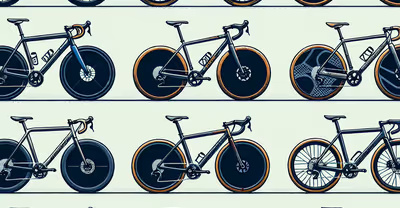

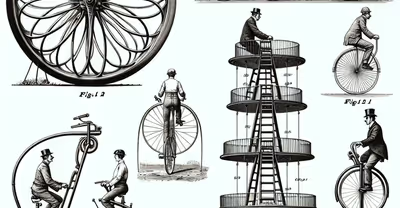










































































































































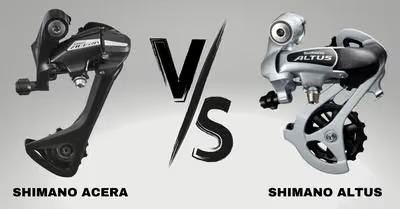






































































































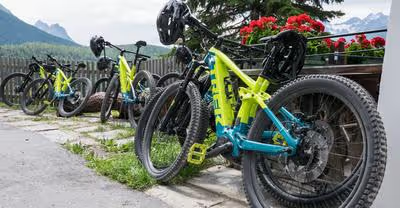

































































































































































































































































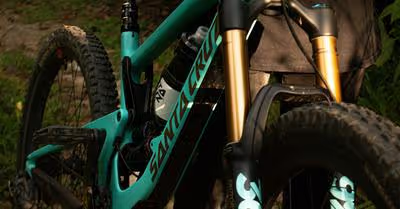


















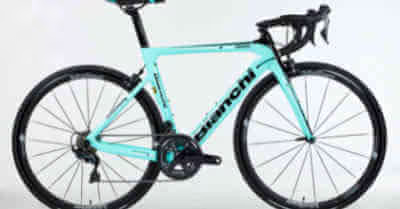



































.avif)
